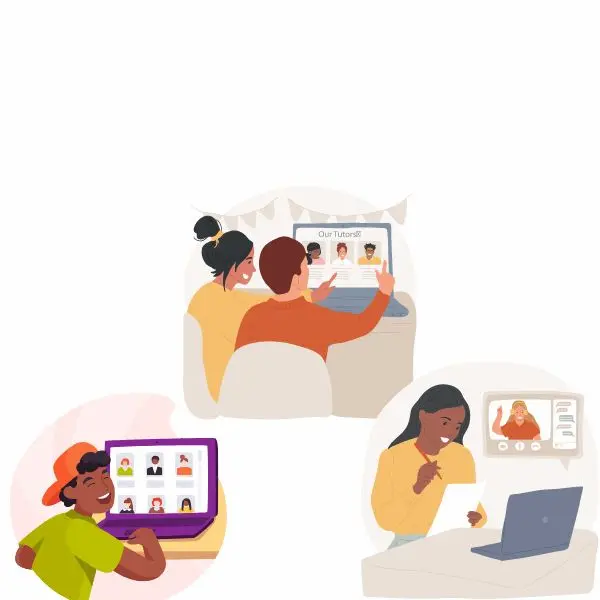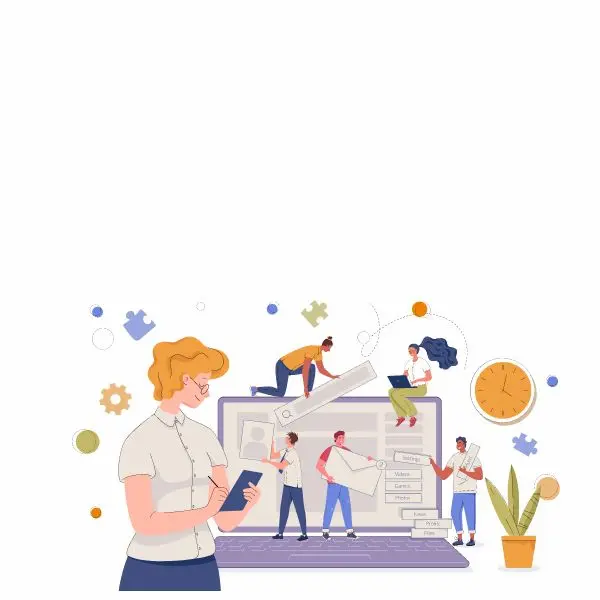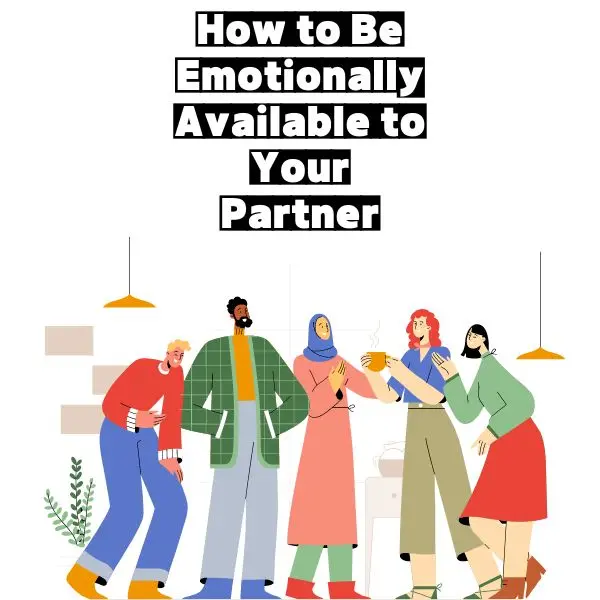INTRODUCTION
A close emotional connection with your partner is one of the most important aspects of any healthy relationship. However, being emotionally available does not always come naturally for everyone. Emotions can seem complex, scary and difficult to understand at times which is why some people shy away from really opening up. But putting effort into becoming more emotionally available is so worthwhile as it leads to increased trust, intimacy and a stronger bond with your partner. Here are some effective tips and strategies to help you improve your emotional availability:
| Aspect | Description | Reference |
|---|---|---|
| Emotional awareness | Understanding your own emotions, how they impact your thoughts and behaviors. | Daniel Goelman (2022) |
| Active listening | Giving your partner your full, undivided attention when they share how they feel. | Gottman Institute (2021) |
| Vulnerability | Sharing your emotions, weaknesses and inner thoughts with care and honesty. | Brené Brown (2020) |
| Nonverbal communication | Ensuring facial expressions and body language match what you say you feel. | Mehrabian, Albert (1972) |
| Consistency | Making emotional availability a consistent priority, not just during conflicts or big moments. | Gottman, John & Silver, Nan (1999) |
Develop Emotional Awareness of Yourself
One of the most crucial steps to becoming emotionally available is developing self-awareness of your own emotions. You need to understand what emotions you are feeling, why you feel that way, and how those emotions influence your thoughts and behaviors. Most people are not naturally very emotionally self-aware. It’s a learned skill that takes regular practice. Some effective ways to boost your emotional awareness include:
- Pay attention to your body sensations – Emotions are often felt in the body first through sensations like tension, butterflies, tightness, etc. Noticing these clues can help identify what you’re feeling.
- Reflect on your thoughts and behaviors – Ask yourself why certain situations or comments made you react in a certain way. Your emotions likely influenced your perspective or response.
- Express gratitude daily – Taking time to appreciate good things, people and experiences release feel-good hormones that create positive emotional states.
- Journal regularly – Writing down your feelings, triggers and inner thoughts in a personal journal helps surface deeper emotions you were potentially unaware of.
- Practice mindfulness meditation – Spending just 10 minutes focused on your breath and present-moment feel calms the mind and makes subtle emotions more noticeable.
With consistent self-reflection, you’ll learn to interpret your internal cues better to communicate how you truly feel to your partner instead of just reacting unconsciously. This lays the foundation for emotional availability.
Listen Actively When Your Partner Shares

Another crucial part of being emotionally available is ensuring your partner feels truly heard when they open up to you. Providing active listening is so important for building trust and intimacy. Some key components of active listening include:
- Put away distractions and give them your full attention – Nothing shuts down vulnerability quicker than a partner on their phone while you share feelings.
- Maintain engaging body language like eye contact, nodding, and facing toward them – This shows through nonverbal cues you are invested in what they say.
- Reflect back on what you heard them say in your own words – Paraphrasing ensures you understood their perspective and experience accurately.
- Ask thoughtful questions to learn more details – Questions show interest in fully grasping their feelings rather than waiting for your turn to respond.
- Validate their feelings – Confirm that you believe what they expressed is understandable given the situation instead of disagreeing or minimizing.
- Focus on understanding not just problem-solving – Sometimes people need to express their feelings without the pressure of immediately fixing things.
Practicing active empathy through listening sends the message that your partner’s emotions significantly matter to you. It deepens intimacy exponentially when each person feels truly heard.
Become Vulnerable Yourself with Care and Honesty
A large part of being emotionally available entails developing vulnerability within the relationship. You have to be willing to openly share your own inner thoughts and emotions without fear of judgment or reprisal for your partner to do the same. Some key aspects of cultivating healthy vulnerability include:
- Start with low-risk feelings to build comfort – Things like missing your partner after time apart get easier to share before expressing deeper insecurities.
- Choose timing wisely based on comfort levels – Sharing when feelings are still raw risks defensiveness, but wait too long and it loses significance.
- Explain positives and negatives – Balancing critiques with appreciation like things they do makes you approachable.
- Admit uncertainties or mistakes calmly – Owning errors without spiraling shows emotional maturity they can trust and learn from openly too.
- Accept discomfort as natural not a failure – Being vulnerable means leaving your normal defenses, so some unease is expected in the growth process.
- Be receptive to feedback too – A two-way exchange of perspectives fosters closeness much more than making it a solo speech.
By bravely opening your heart more over time through intentional vulnerability, it encourages your partner to feel safer revealing their emotions to you freely.
Match Your Nonverbal Cues

The words you say should always align with your nonverbal behaviors as well for true emotional availability. Facial expressions, body language, and tone of voice unconsciously reveal much about how someone genuinely feels beneath what they claim. Things like:
- Smiling and making eye contact when discussing positive feelings – This validates your words through a congruent positive demeanor.
- Furrowed brows or a severe tone to negative emotions discussed – Nonverbal signals match your feelings.
- Relaxed, open posture rather than crossed arms when vulnerable – Your physique language welcomes openness rather than appearing closed off.
- Nodding emphatically when listening instead of fidgeting – This ensures your partner knows their feelings have your sincere attention through mirrored cues.
Actively monitoring your nonverbal cues so they reinforce rather than contradict your words fosters honest intimacy as partners learn to trust and believe each other’s emotional experience. Small gestures go a long way in building emotional availability.
Develop Consistency in Your Availability

Prioritizing emotional availability cannot be a once-in-a-while occurrence for important events alone. Your partner needs to know they can rely on you to be emotionally there for them on an ongoing, daily basis through all relationship highs and lows. Some aspects of cultivating consistency include:
- Schedule regular quality time to connect without distractions – 15 minutes of undivided attention a few times a week makes a difference.
- Express affection verbally and physically daily – “I care about you” through hugs, kisses, and gentle touches strengthens bonds.
- Be approachable when they’re down too – Sometimes just a supportive presence means everything for your partner without any problem-solving required from you.
- Check in regularly to see how they’re coping with life stressors – Small gestures like bringing tea or asking thoughtful questions show you care how they’re feeling even when busy.
- Apologize sincerely for lapses and recommit – We all have off days, but taking accountability and preparing to do better fosters trust through honesty.
- Incorporate emotional check-ins on car rides or walks – Low-key quality times together invite openness where reflections come naturally.
Making consistent efforts large or small allows both partners to feel their feelings are a priority, not an afterthought which profoundly deepens any relationship over the long term.
In Summary
Developing emotional availability takes practice, commitment, and mindfulness. While it may not come naturally for everyone, consciously working on skills like self-awareness, active listening, vulnerability, effective communication, and consistency over time can significantly enhance intimacy and trust with your partner. The rewards of a closer bond, increased understanding and reduced stress from conflict make the effort more than worthwhile for a healthy, thriving relationship. With regular feedback and support, emotional availability becomes achievable for anyone looking to strengthen their special connection.


1 thought on “How to Be Emotionally Available to Your Partner”